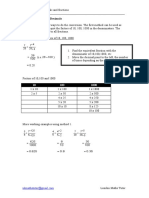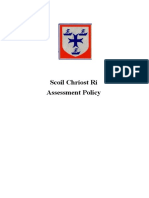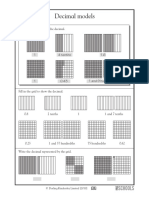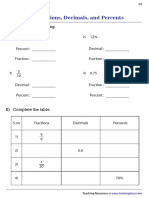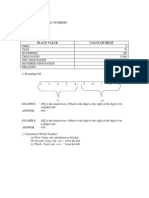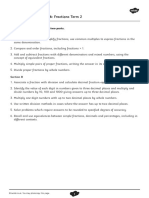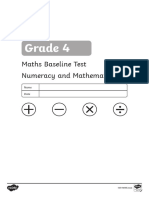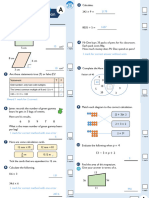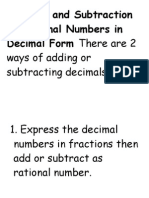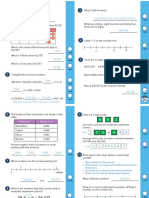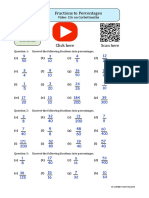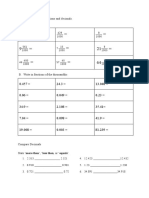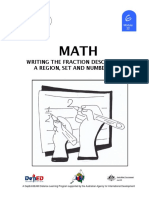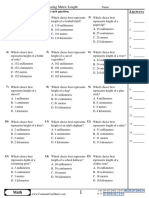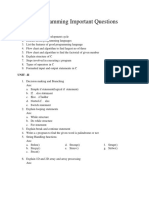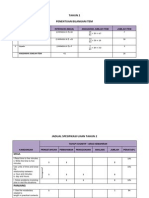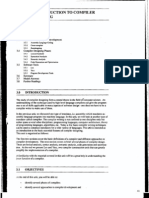0% found this document useful (0 votes)
132 views3 pagesFractions to Decimals Guide
This document provides instructions and examples for converting fractions to decimals and decimals to fractions. It explains that all fractions can be converted to decimals by dividing the numerator by the denominator. It also explains that all decimals can be converted to fractions by writing the decimal as a fraction with a denominator of 1, then multiplying the numerator and denominator by a power of 10 to make it a whole number and reducing if possible. The document includes examples of converting specific fractions and decimals.
Uploaded by
Wilzel MirandaCopyright
© © All Rights Reserved
We take content rights seriously. If you suspect this is your content, claim it here.
Available Formats
Download as PDF, TXT or read online on Scribd
0% found this document useful (0 votes)
132 views3 pagesFractions to Decimals Guide
This document provides instructions and examples for converting fractions to decimals and decimals to fractions. It explains that all fractions can be converted to decimals by dividing the numerator by the denominator. It also explains that all decimals can be converted to fractions by writing the decimal as a fraction with a denominator of 1, then multiplying the numerator and denominator by a power of 10 to make it a whole number and reducing if possible. The document includes examples of converting specific fractions and decimals.
Uploaded by
Wilzel MirandaCopyright
© © All Rights Reserved
We take content rights seriously. If you suspect this is your content, claim it here.
Available Formats
Download as PDF, TXT or read online on Scribd
/ 3
